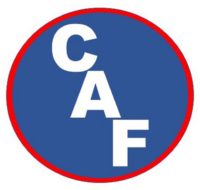______________________________________________________________________________
#1 CAFS causes the temperature to rise within a structure as fire control is initiated.
FALSE ! This myth is perpetuated by firefighters with little or incorrect training. A brief application of dry foam into a super heated atmosphere will cause extreme thermal disruption at ceiling level thus forcing high temperature gases to floor level driving fire fighting forces out of the building and worsening conditions for trapped occupants.
With proper application techniques and flow rates, the temperatures in a burning structure will cool so rapidly that the atmosphere transitions through the steam producing temperature range so quickly that very little steam will be produced. Many cases of actual smoke inversion due to rapid cooling have been seen throughout North America.
#2 Using low GPM flows during fire attack will reduce over all water consumption.
FALSE ! Most firefighters are aware of “Critical Application Rates”. The use of Class A foam, especially in the form of CAF does have a positive effect on Critical Application Rates. Fire departments across North America report dramatic water savings through the proper use of CAFS, but this savings is achieved via quick fire control, reduced mop-up and shutting down of the nozzle at the correct time, not low GPM flows. Low GPM flows will require attack teams to remain in the fire area for a longer period of time to achiFAeve control. Very low flows are a safety concern and are not recommended.
#3 The nozzle you select will make or break your CAFS fire attack.
TRUE ! When CAF bubbles reach the end of an appropriate length of hose line it’s construction is complete. The nozzle has a direct and dramatic impact on the foams physical form and thus it’s reaction to heat and Class A fuels. A basic rule of thumb to use is: Larger orifice = dryer foam and smaller orifice = wetter foam. This has to do with the expansion of or, compacting of the foam as it leaves the nozzle tip. The tactical needs drive the selection of tip size, which should be quickly interchangeable by the nozzle operator. The use of currently marketed fog nozzles with CAF will cause degradation of the bubble structure. The components of a fog nozzle that break water or foam solution into droplets (Fog) also breaks the CAF bubbles and releases the air forming the bubbles back to atmosphere. Thus, you are then discharging liquid foam solution with little to no bubble structure. All the time and funds expended on acquiring a CAFS capable engine are negated by selecting a nozzle that destroys the desired product. CAF is most effective and most versatile when applied via a smooth bore nozzle. A fog nozzle is an excellent and indispensable tool; it’s just not the tool for the task of discharging Compressed Air Foam.
#4 Flows can be diminished or completely stopped due to hose kinks.
TRUE and FALSE! Interior attack hose lines of CAF are approximately 30% air and are undeniably less rigid than a line flowing liquid. Since a large percentage of the volume is compressible air, it is possible to reduce or stop the foam flow with hose kinks if your pump pressure is BELOW 100PSI. With normal hose line management (Flaking out line) that you should already be using, and pump pressures of 100-110 PSI, hose kinks, even 180° kinks are of little concern. Entry into a fire building (IDLH Environment) requires 100+ PSI pump pressures.





































